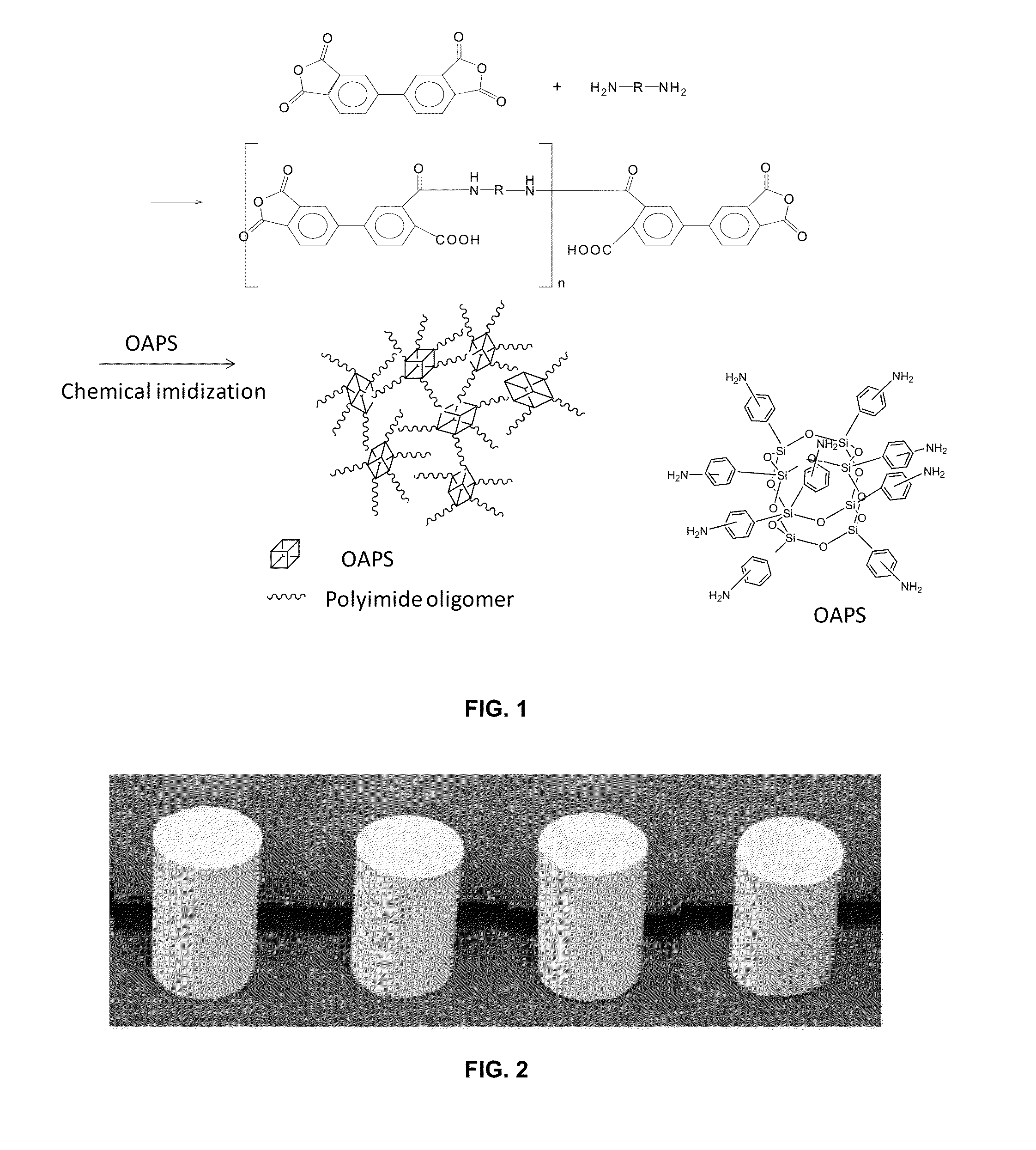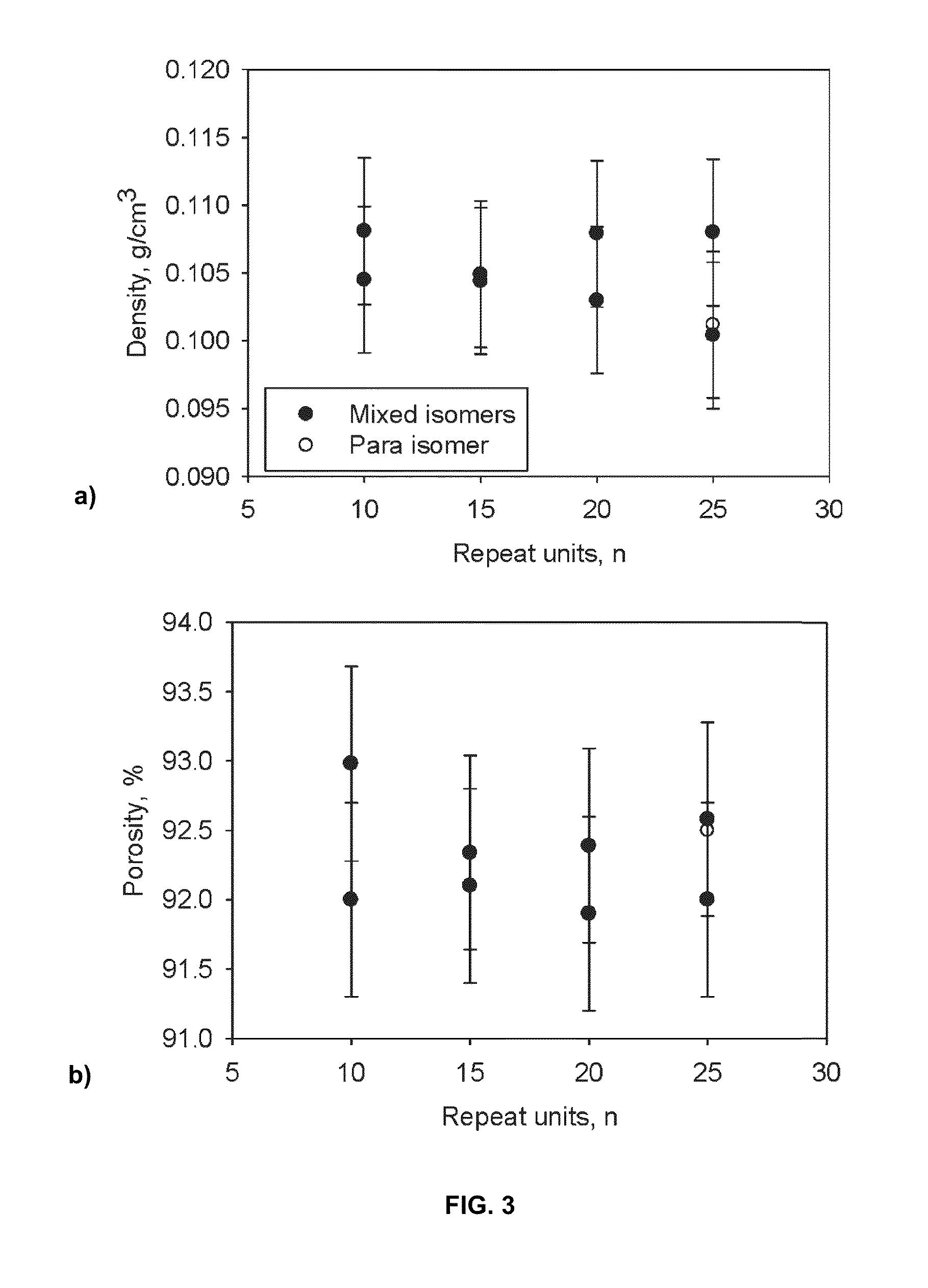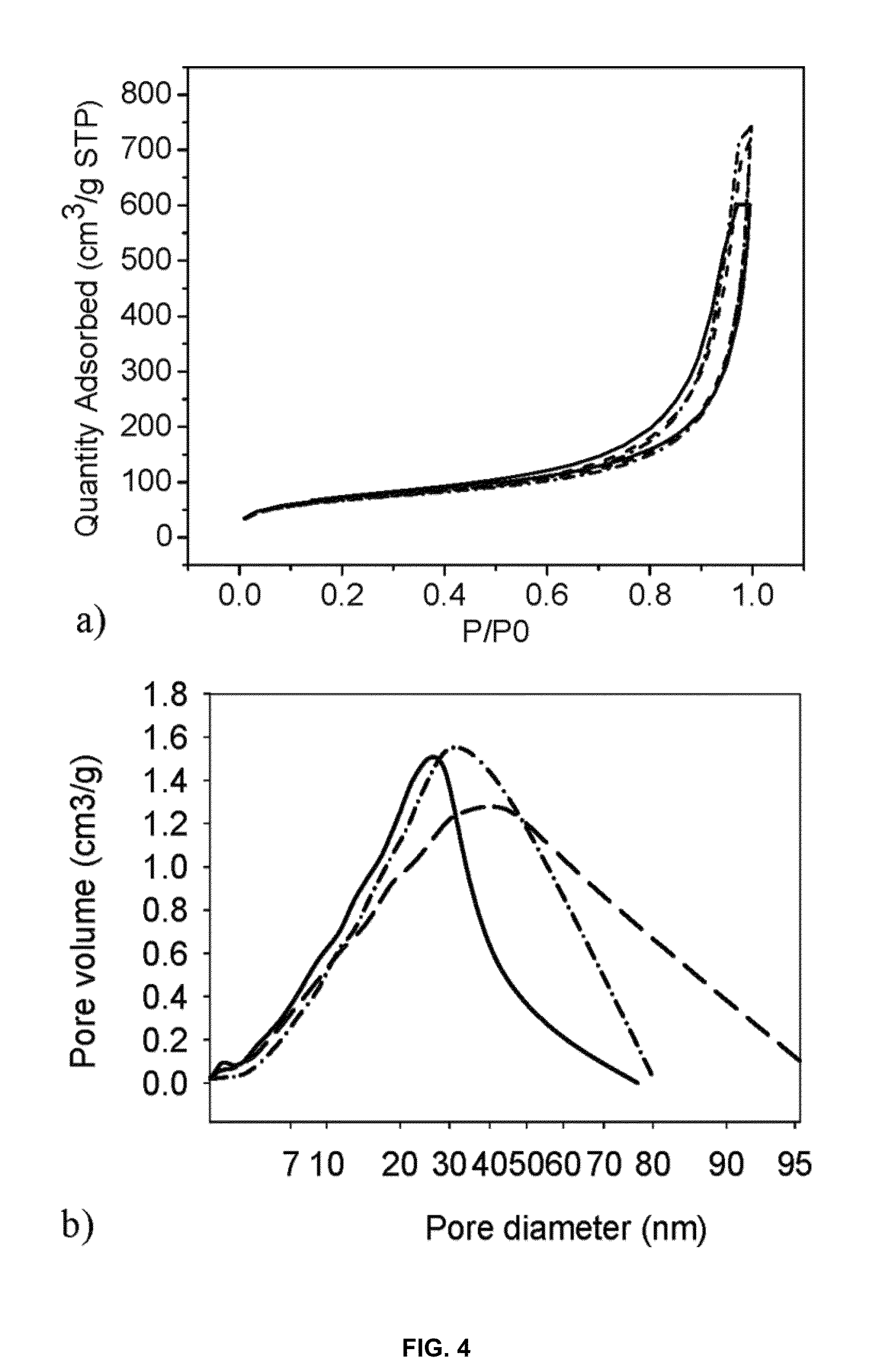Porous cross-linked polyimide networks
a polyimide network and cross-linked technology, applied in the field of polyimide networks, can solve the problems of brittle silica aerogels, affecting the quality of silica aerogels, and reducing the quality of silica aerogels, and achieving the effect of improving the quality of silica aerogels
- Summary
- Abstract
- Description
- Claims
- Application Information
AI Technical Summary
Benefits of technology
Problems solved by technology
Method used
Image
Examples
example 1
Experimental Section
[0080]Materials. BPDA was purchased from Chriskev, Inc., (13920 W 108th Street, Lenexa, Kans., 66215, USA). BAX was obtained from Maverick, Inc., (11379 Grooms Road, Cincinnati, Ohio 45242-14050). OAPS as a mixture of isomers (meta:ortho:para=60:30:10) was acquired from Gelest, Inc. An all para-isomer, p-OAPS was purchased from Hybrid Plastic, Inc. HPLC grade N-methyl-2-pyrrolidinone (NMP) and pyridine were purchased from Sigma-Aldrich. Anhydrous acetic anhydride was purchased from Fisher Scientific. All reagents were used without further purification.
[0081]General. Attenuated total reflectance (ATR) infrared spectroscopy was conducted using a Nicolet Nexus 470 FT-IR spectrometer. Solid 13C NMR spectroscopy was carried out with a Bruker Avance-300 spectrometer, using cross-polarization and magic angle spinning at 11 kHz. The solid 13C spectra were externally referenced to the carbonyl of glycine (176.1 relative to tetramethylsilane, TMS). Scanning electron microg...
example 2
Experimental Section
[0101]Materials. 1,3,5-Triaminophenoxybenzene (TAB) was obtained from Triton Systems (200 Turnpike Rd #2, Chelmsford, Mass. 01824-4053). Pyridine, acetic anhydride, p-phenylene diamine (PPDA), and anhydrous N-methylpyrrolidinone (NMP) were purchased from Sigma Aldrich. 2,2′-Dimethylbenzidine (DMBZ), 4,4′-oxydianiline (ODA), benzophenone-3,3′,4′4′-tetracarboxylic dianhydride (BTDA), and biphenyl-3,3′,4,4′-tetracarboxylic dianhydride (BPDA) were obtained from Chriskev, Inc. (13920 W 108th Street, Lenexa, Kans., 66215). Dianhydrides were dried at 125° C. in vacuum for 24 h before use. All other reagents were used without further purification.
[0102]Instrumentation. Attenuated total reflectance (ATR) infrared spectroscopy was conducted using a Nicolet Nexus 470 FT-IR spectrometer. 13C NMR spectra of the polymers were obtained on a Bruker Avance 300 spectrometer using 4 mm solids probe with magic angle spinning at 11 kHz and cross-polarization. Spectra were externally ...
example 3
[0122]The properties of polyimide aerogels cross-linked with OAPS made with ODA, PPDA and DMBZ in the backbone, as shown in the scheme in FIG. 22, were studied. It is of interest to discern if the observed differences in properties (shrinkage, surface area, mechanical properties) of OAPS versus TAB cross-linked aerogels are due to the different cross-linker or due to different backbone structure or both. In addition, it is of interest to optimize the properties of the aerogel by using ODA in combination with either of the rigid diamines, PPDA or DMBZ. In this regard, DMBZ or PPDA are used to replace up to 100 mol % ODA to optimize the mechanical properties, thermal stability and resistance to moisture of the polyimide aerogels. As shown in the scheme in FIG. 22, polyimide gels are obtained as previously described using chemical imidization at room temperature, using pyridine and acetic anhydride. The polyimide gels are then dried using CO2 supercritical fluid extraction to produce p...
PUM
| Property | Measurement | Unit |
|---|---|---|
| density | aaaaa | aaaaa |
| porosity | aaaaa | aaaaa |
| pore diameter | aaaaa | aaaaa |
Abstract
Description
Claims
Application Information
 Login to View More
Login to View More - R&D
- Intellectual Property
- Life Sciences
- Materials
- Tech Scout
- Unparalleled Data Quality
- Higher Quality Content
- 60% Fewer Hallucinations
Browse by: Latest US Patents, China's latest patents, Technical Efficacy Thesaurus, Application Domain, Technology Topic, Popular Technical Reports.
© 2025 PatSnap. All rights reserved.Legal|Privacy policy|Modern Slavery Act Transparency Statement|Sitemap|About US| Contact US: help@patsnap.com



